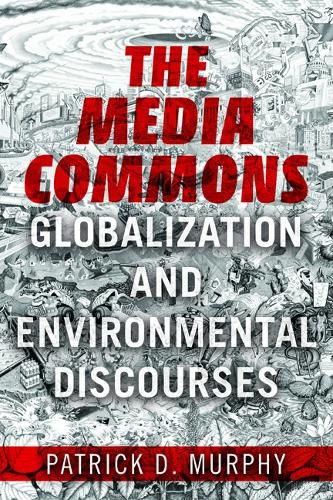Readings Newsletter
Become a Readings Member to make your shopping experience even easier.
Sign in or sign up for free!
You’re not far away from qualifying for FREE standard shipping within Australia
You’ve qualified for FREE standard shipping within Australia
The cart is loading…






Today’s global media sustains a potent new environmental consciousness. Paradoxically, it also serves as a far-reaching platform that promotes the unsustainable consumption ravaging our planet. Patrick Murphy musters theory, fieldwork, and empirical research to map how the media communicates today’s many distinct, competing, and even antagonistic environmental discourses. The media draws the cultural boundaries of our environmental imagination–and influences just who benefits. Murphy’s analysis emphasizes social context, institutional alignments, and commercial media’s ways of rendering discussion. He identifies and examines key terms, phrases, and metaphors as well as the ways consumers are presented with ideas like agency and the place of nature. What emerges is the link between pervasive messaging and an environment conjured by our media-saturated social imagination. As the author shows, today’s complex, integrated media networks shape, frame, and deliver many of our underlying ideas about the environment. Increasingly–and ominously–individuals and communities experience these ideas not only in the developed world but in the increasingly consumption-oriented Global South.
$9.00 standard shipping within Australia
FREE standard shipping within Australia for orders over $100.00
Express & International shipping calculated at checkout
Today’s global media sustains a potent new environmental consciousness. Paradoxically, it also serves as a far-reaching platform that promotes the unsustainable consumption ravaging our planet. Patrick Murphy musters theory, fieldwork, and empirical research to map how the media communicates today’s many distinct, competing, and even antagonistic environmental discourses. The media draws the cultural boundaries of our environmental imagination–and influences just who benefits. Murphy’s analysis emphasizes social context, institutional alignments, and commercial media’s ways of rendering discussion. He identifies and examines key terms, phrases, and metaphors as well as the ways consumers are presented with ideas like agency and the place of nature. What emerges is the link between pervasive messaging and an environment conjured by our media-saturated social imagination. As the author shows, today’s complex, integrated media networks shape, frame, and deliver many of our underlying ideas about the environment. Increasingly–and ominously–individuals and communities experience these ideas not only in the developed world but in the increasingly consumption-oriented Global South.